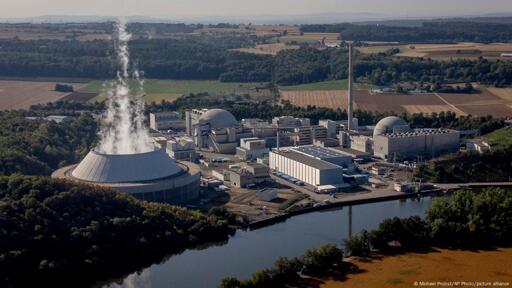Summary
A new Innofact poll shows 55% of Germans support returning to nuclear power, a divisive issue influencing coalition talks between the CDU/CSU and SPD.
While 36% oppose the shift, support is strongest among men and in southern and eastern Germany.
About 22% favor restarting recently closed reactors; 32% support building new ones.
Despite nuclear support, 57% still back investment in renewables. The CDU/CSU is exploring feasibility, but the SPD and Greens remain firmly against reversing the nuclear phase-out, citing stability and past policy shifts.



Our largest power plant, with 6 reactors, was built in 6 years. To this day it provides us with around 6% of our global power requirements. It’s been running for 45 years, producing 32TWh per year with 0 carbon emissions.
It’s like we could build them faster if we wanted to ? We’ve done it already, we can do it again.
45 years would be 1980. That sounds like you’re refering to Zaporizhzhia Nuclear Power Plant, but construction started in 1980, and although the first five reactors went live 5 years later the 6th reactor didn’t go live until 1996. 16 years later.
Even so, you’re only counting construction. That plant would have been being designed for at least 5 years previous.
And safety standards have gone up since then, in part because of it’s slightly older cousin at Chernobyl (different design, but also built in 5 years).
I’m talking about Gravelines in France. The first reactor was plugged into the national grid 6 years after construction began. The 6th reactor in 1985.
The EPR2 is already designed, and in service in Flamanville. Flamanville 3 took a long time because we had to rebuild our whole nuclear industry, by lack of political vision back in the 90’s-00’s.
We’re building it again, two by two this time, and hopefully in less than half the time and budget.
Flamanville is EPR, not EPR2. Flamanville’s delay is the reason for EPR2. EPR2 is not being built anywhere yet.
EPR is one of my go to examples of how long nuclear takes.
So I grant you that EDF needed to rebuild knowledge, but 12 years after they started the first plant they started HPC. They increased the timescale from 5 to 7 years construction, but are still going to be at least 6 years late and 35% over budget. On Sizewell they’ve added another 2 years minimum with a window up to 5 extra years over HPC…for the fifth site in the family. We should be accelerating now, right? Even in China the timescale was 9 years.
It’s not just EDF. Westinghouse had similar problems with Vogtle 3 starting construction in 2009 and completing in 2023. 14 years construction again.
Can things get faster…sure, but 65% faster to get back down to 5 years. No.